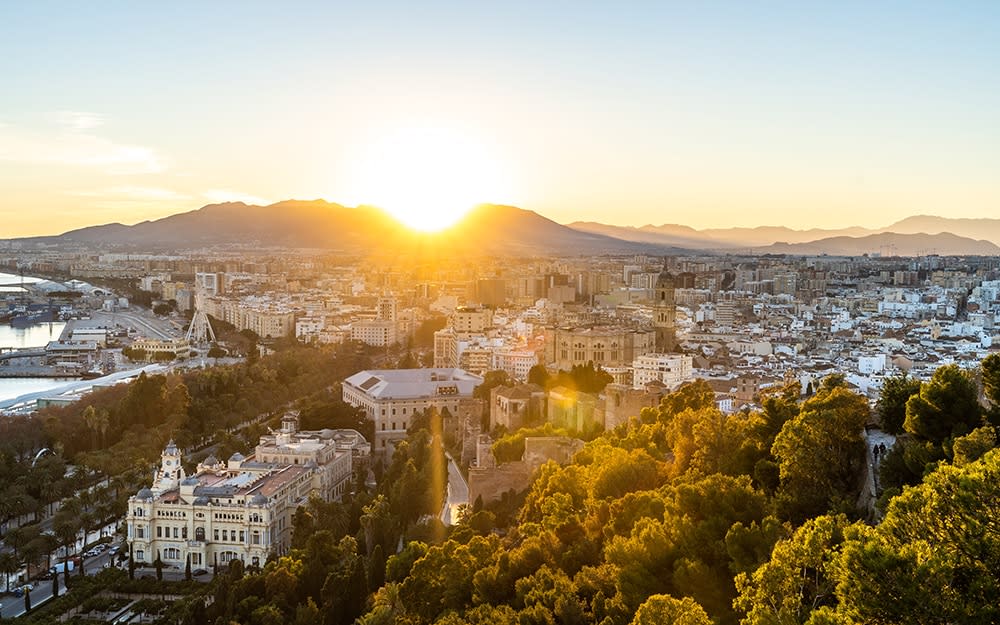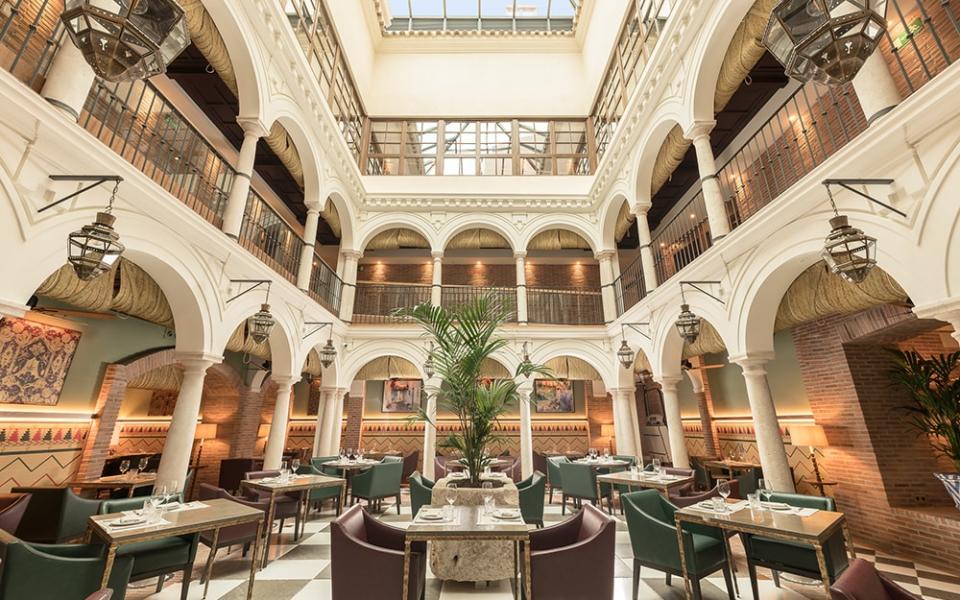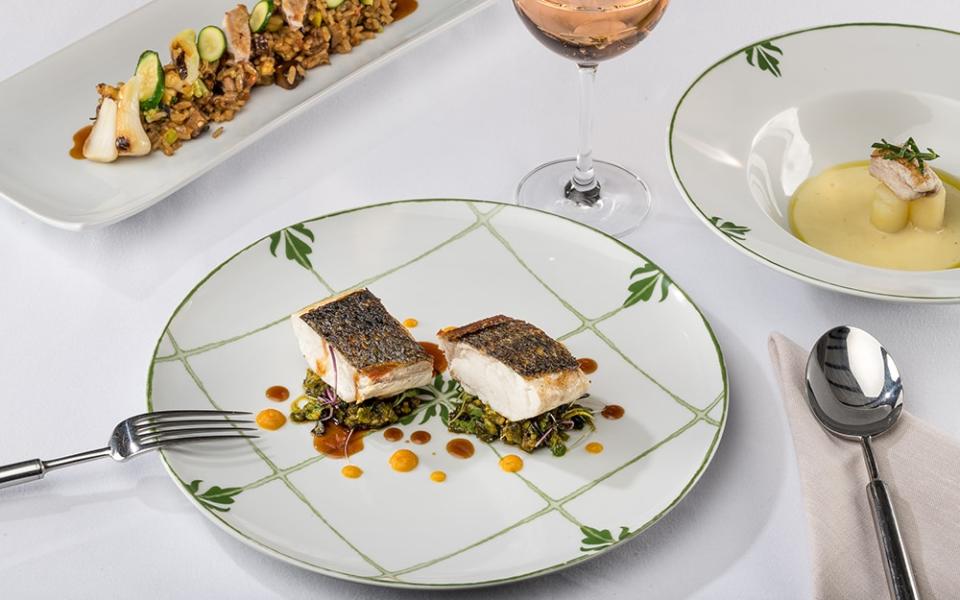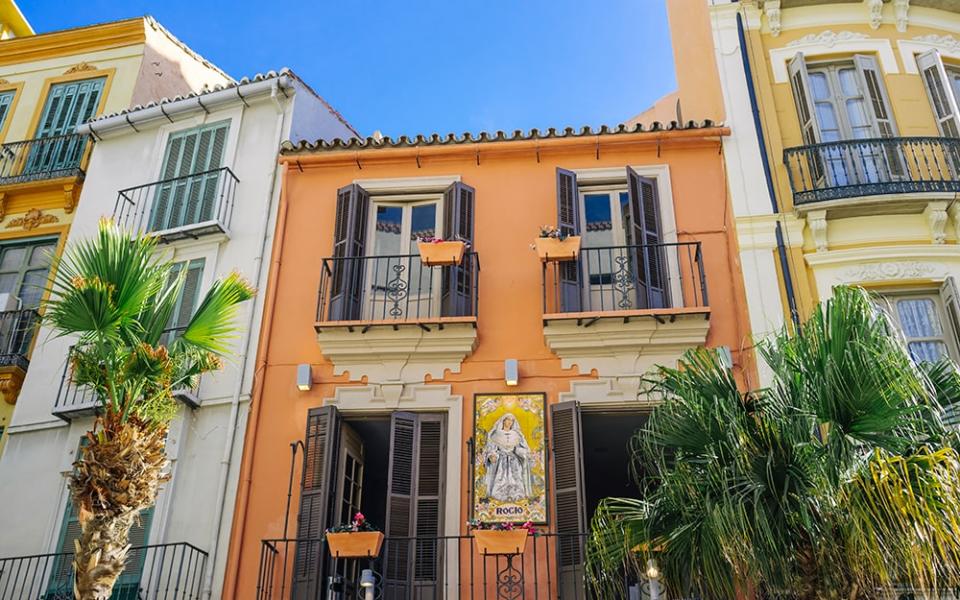The authentic alternative to Barcelona with a grand hotel that is bringing extra buzz

Malaga works its magic fast. Just 20 minutes after leaving the airport, in the carefree days shortly before the pandemic hit Spain, our taxi pulled up in central Plaza de la Merced. The Moorish castle of Gibralfaro stands guard on the soaring hilltop above the elegant square, where two smiling hotel porters emerged from the Friday evening throng and led us along Calle Granada into the pedestrianised old quarter, full of life and, in early March, basking in shirtsleeves warmth.
It was a heady start in a city that I’d only ever flown to and then immediately abandoned for Marbella, Ronda or Granada. And it chimed exactly with the word on the street: that Malaga, albeit smaller, after a decade of regeneration and cultural impetus, is the new Barcelona, with a similar energy and vibe, a thriving art scene and a youthful food scene, now coming back to life after months of enforced silence.
It’s not just the newly cool old town that’s seen an influx of young people setting up businesses and opening shops, restaurants and galleries; the coloured glass cube of the Pompidou Centre is the centrepiece of the Muelle Uno in the regenerated port, now full of people, bars and stalls, while the nearby graffiti-splashed streets of formerly rundown Soho surround the Contemporary Art Centre, with an international reputation for the quality of its exhibitions, and the Soho Theatre, recently bought and revamped by son of Malaga Antonio Banderas.
If Malaga’s shrugging off of its reputation as a gritty port city of the Costa del Sol and its emergence as a laid-back hub of exquisite food and world-class culture is now complete, then the opening early this year, and reopening this month, of Palacio Solecio underlines the transformation. I am a great fan of Pablo Carrington’s authentic, location-conscious Marugal hotels in Madrid (Urso), Formentera (Gecko Beach) and Mallorca (Cap Rocat) and when he told me about this one, the first address in Malaga that does real justice to the city’s elevated status, I knew it was the moment to visit. The combination of an exciting new city to explore, a new Marugal hotel to stay in and winter warmth seemed unmissable.
And so it proved. Palacio Solecio is a stunning 18th-century building, originally the home and warehouse of Félix Solesio, an Italian manufacturer of playing cards. The sgraffito paintwork on the façade, including charming images of pomegranates and the sun, was uncovered during restoration and there is a fine stone monumental staircase, but little else remained inside. Designer Antonio Obrador, who is responsible for Cap Rocat and Urso, has once more created interiors that are respectful of the past yet coolly modern, with exposed Moorish brickwork, intricate leatherwork, stone arches around internal courtyards and oak floors, panelling and doors.

We couldn’t wait to explore; indeed even as our bags were being taken to our rooms, we nipped across the street to Santiago Apóstol, the beautiful part Mudéjar, part Baroque church opposite to see what was going on. It’s the oldest church in Malaga, built in 1490 on the ruins of a mosque, and tradition says that on that first Friday in March, the faithful, who come in their thousands, can make three wishes in return for three coins placed at the feet of the image of Christ of Medinaceli. The dramatic, richly clothed life-size figures around the church, the banks of deep red flowers and the silent stream of worshippers were certainly a distraction from check-in.
Time to eat. To do justice to Malaga’s growing foodie reputation, I had the perfect companion. If properly immersing ourselves meant indulging in the full panoply of Spanish meals – desayuno (breakfast), almuerzo (morning snack), la comida (lunch), merienda (afternoon snack), hora del aperitivo (tapas hour) and finally la cena (dinner), then my friend Lui was equal to the task. Irritatingly pencil-thin, she nevertheless adores her grub.
Just a light desayuno to start the day, enjoyed in Balausta, the hotel’s elegant restaurant set round a light-filled internal patio. Then, after a long, steep climb up the mountain path, appealingly punctuated by busking Spanish guitarists, to the Alcazaba fortress and the castle above, we headed downhill to unchanged Casa Aranda, one of Malaga’s famous churrerías, for hot chocolate and a ration of sweet and crunchy churros, which is how many Malagueños keep going till lunch. Just around the corner is the spectacular Atarazanas Market and La Mallorquina, an old-fashioned food store full of goodies – jamón, anchovies, almonds, cheeses – to take home.

Lunch is taken around 2pm or later. One day we ate at La Cosmopolita, a brilliant little gourmet restaurant where a tasting menu of four dishes between two of us was perfect, especially the prawn tartare with roasted bone marrow and their take on Russian salad (a Malaga speciality). Another day, we mopped up delicious gambas and clams at simple marisqueria Casa Vicente, and on another we took a taxi along the coast to Pedregalejo, swam in the sea and lunched at one of the many beachside restaurants where sardines are roasted on skewers over wood piled into old rowing boats. Walking home (God knows we needed the exercise), we took in the Pompidou Centre and then strolled on under the tall palms of the Paseo del Parque that lend Malaga a stately air.
But it is the car-free old town, centred on the huge cathedral and packed with historic cafes and tapas bars, innovative new restaurants, beautiful 19th-century houses with glass-enclosed balconies and absorbing museums such as the Picasso, Malaga, Carmen Thyssen, Russian and Ifergan, that makes visiting such a pleasure. Somehow we also found time for the 19th-century Concepción botanical gardens with their magnificent arching plane trees, pools, bridges, wisteria walk and original wrought iron and painted ceramic signs.

We were busy, but constantly entertained, and Malaga has a truly relaxing air. After visiting the Picasso museum (he was born here) or browsing in marble-paved Calle Larios, surely one of Europe’s most elegant shopping streets, it was time for tea and cakes at Moorish La Tetería or wine and tapas at a flamenco show at Los Amayas, or a plate of jamón de Bellota accompanied by rich, dark glasses of pajarete straight from the barrel at historic bodega Pimpi, part-owned by Antonio Banderas and overlooking the countrified Roman Theatre and green slopes of the Alcazaba.
As for dinner – eaten late with the locals not early with the tourists, our favourite was a friendly little place called Taberna Monroy where Malagueño staples such as boquerones, tomatoes, crunchy olives and croquettes tasted out of this world. We also dined at Banderas’s newest restaurant, Tercer Acto, next to the Soho Theatre. But my dish of the trip was at Balausta, run by Michelin-starred chef José Carlos Garcia. I can still taste the little mounds of potato cooked in orange juice that flavoured an exquisite salad of salt cod and orange, another local speciality.
How happy we were. The proximity of the lush mountain on which the fortress and the castle are perched, and of the sea and beaches lend the air of a summer resort to Malaga but the wealth of art is worthy of a capital. As for the food, no one can say we didn’t do it justice. As the bells of Santiago Apóstol tolled, we were escorted reluctantly back to Plaza Merced and on to the airport.
Essentials
Palacio Solecio reopens on Thursday, offering a special reopening price of double rooms from €165 (about £150) a night, B&B (00 34 952 22 20 00).
British Airways and easyJet both fly to Malaga from many UK airports.

